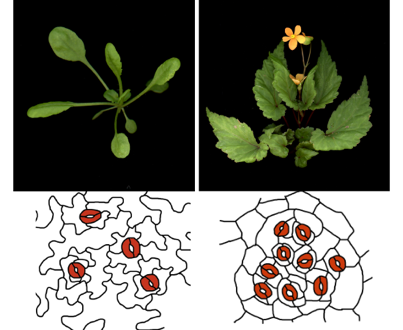2023-08-09 ミュンヘン大学(LMU)
◆特殊な組織浸透法と3Dイメージングを用いて、硬脳膜という最も外側の髄膜を貫通する接続が発見され、これまで考えられていた以上に脳との近接性が示されました。さらに、頭蓋骨には他の骨には見られない特有の白血球である好中球免疫細胞が存在し、免疫系の防御機能に重要な役割を果たしていることがRNAとタンパク質の分析によって確認されました。
◆この研究は、脳疾患の診断や治療の新たな可能性を提供し、神経疾患の理解を変革する可能性を秘めています。
<関連情報>
- https://www.lmu.de/en/newsroom/news-overview/news/a-new-ally-in-fighting-brain-diseases-our-very-own-skull.html
- https://www.cell.com/cell/fulltext/S0092-8674(23)00742-0
健康と神経疾患における頭蓋骨骨髄の特徴的な分子プロファイル Distinct molecular profiles of skull bone marrow in health and neurological disorders
Zeynep Ilgin Kolabas,Louis B. Kuemmerle,Robert Perneczky,Benjamin Förstera,Selin Ulukaya,Mayar Ali,Saketh Kapoor,Laura M. Bartos,Maren Büttner,Ozum Sehnaz Caliskan,Zhouyi Rong,Hongcheng Mai,Luciano Höher,Denise Jeridi,Muge Molbay,Igor Khalin,Ioannis K. Deligiannis,Moritz Negwer,Kenny Roberts,Alba Simats,Olga Carofiglio,Mihail I. Todorov,Izabela Horvath,Furkan Ozturk,Selina Hummel,Gloria Biechele,Artem Zatcepin,Marcus Unterrainer,Johannes Gnörich,Jay Roodselaar,Joshua Shrouder,Pardis Khosravani,Benjamin Tast,Lisa Richter,Laura Díaz-Marugán,Doris Kaltenecker,Laurin Lux,Ying Chen,Shan Zhao,Boris-Stephan Rauchmann,Michael Sterr,Ines Kunze,Karen Stanic,Vanessa W.Y. Kan,Simon Besson-Girard,Sabrina Katzdobler,Carla Palleis,Julia Schädler,Johannes C. Paetzold,Sabine Liebscher,Anja E. Hauser,Ozgun Gokce,Heiko Lickert,Hanno Steinke,Corinne Benakis,Christian Braun,Celia P. Martinez-Jimenez,Katharina Buerger,Nathalie L. Albert,Günter Höglinger,Johannes Levin,Christian Haass,Anna Kopczak,Martin Dichgans,Joachim Havla,Tania Kümpfel,Martin Kerschensteiner,Martina Schifferer,Mikael Simons,Arthur Liesz,Natalie Krahmer,Omer A. Bayraktar,Nicolai Franzmeier,Nikolaus Plesnila,Suheda Erener,Victor G. Puelles,Claire Delbridge,Harsharan Singh Bhatia,Farida Hellal,Markus Elsner,Ingo Bechmann,Benjamin Ondruschka,Matthias Brendel,Fabian J. Theis,Ali Erturk
Cell Published:August 09, 2023
DOI:https://doi.org/10.1016/j.cell.2023.07.009

Highlights
•Bone marrow across the body display molecular heterogeneity in mice and humans
•Calvaria cells have a distinct profile that is relevant to brain pathologies
•Structural details of human skull-meninges connections are revealed
•TSPO-PET imaging of human skulls can be a proxy of neuroinflammation in the brain
Summary
The bone marrow in the skull is important for shaping immune responses in the brain and meninges, but its molecular makeup among bones and relevance in human diseases remain unclear. Here, we show that the mouse skull has the most distinct transcriptomic profile compared with other bones in states of health and injury, characterized by a late-stage neutrophil phenotype. In humans, proteome analysis reveals that the skull marrow is the most distinct, with differentially expressed neutrophil-related pathways and a unique synaptic protein signature. 3D imaging demonstrates the structural and cellular details of human skull-meninges connections (SMCs) compared with veins. Last, using translocator protein positron emission tomography (TSPO-PET) imaging, we show that the skull bone marrow reflects inflammatory brain responses with a disease-specific spatial distribution in patients with various neurological disorders. The unique molecular profile and anatomical and functional connections of the skull show its potential as a site for diagnosing, monitoring, and treating brain diseases.


